The management of expectations in doctoral education relates to the negotiation and agreement of a learning contract denoting actions and initiatives between a student and a supervisor. A learning contract is a set of understandings of what things, actions and initiatives might reasonably
[...] Read more.
The management of expectations in doctoral education relates to the negotiation and agreement of a learning contract denoting actions and initiatives between a student and a supervisor. A learning contract is a set of understandings of what things, actions and initiatives might reasonably be expected from whom, in the course of learning, where there is a natural power imbalance. This is important so that both scholarly and material progress can be made along all points of the doctoral learning experience, i.e., that learning is personalised, professional and productive towards an original contribution of knowledge. It is the evidencing of this continual learning process through research that is deemed to be doctoral at the final examination stage. A doctoral student is a learner on the highest degree pathway that is available at all UK universities. This typically results in a thesis, marking the end point of being supervised whereupon an assessment or examination takes place, which, in UK universities, is called a
viva voce (Latin: the living voice). This is a verbal account or defence of the thesis document by the student, made to two or three examiners who comprise the examination team. In the UK, the viva examination is a private event, while elsewhere, for example, across Europe and North America, the examination can be a public event. A student on a doctoral programme usually has a period of registration that is 3 years full-time or 6 years part-time. Other terms that can be used interchangeably around doctoral supervision are candidate (for the student) and candidature, which is their period of registration. Supervisors also have roles denoted as the Director of Studies (DoS) or Principal Investigator (PI). The supervision team is led by a Director of Studies (or PI) who is often the most experienced scholar who teaches, guides and mentors their student’s learning through the research they conduct. There are usually at least two supervisors in a supervision team in the UK, but there can be more as required depending upon the specialisms and topics being researched. Expectations formed by either the student or the supervisor(s) can be about physical resources to embark upon a passage of learning through a doctoral programme, or more typically, the discussion of expectations relates to managing the behaviours of students and supervisors in their respective roles. Managed expectations help to achieve a balance between the intellectual sharing of expertise by the supervisor with the self-directed initiatives for learning, which are taken by the student. The aim of managing expectations is to help a student move from dependence in their learning at the start of their programme to becoming an independent doctoral-level scholar who, once graduated as doctor, can act autonomously to conduct their own research, or even embark upon supervising others’ research in the future.
Full article


